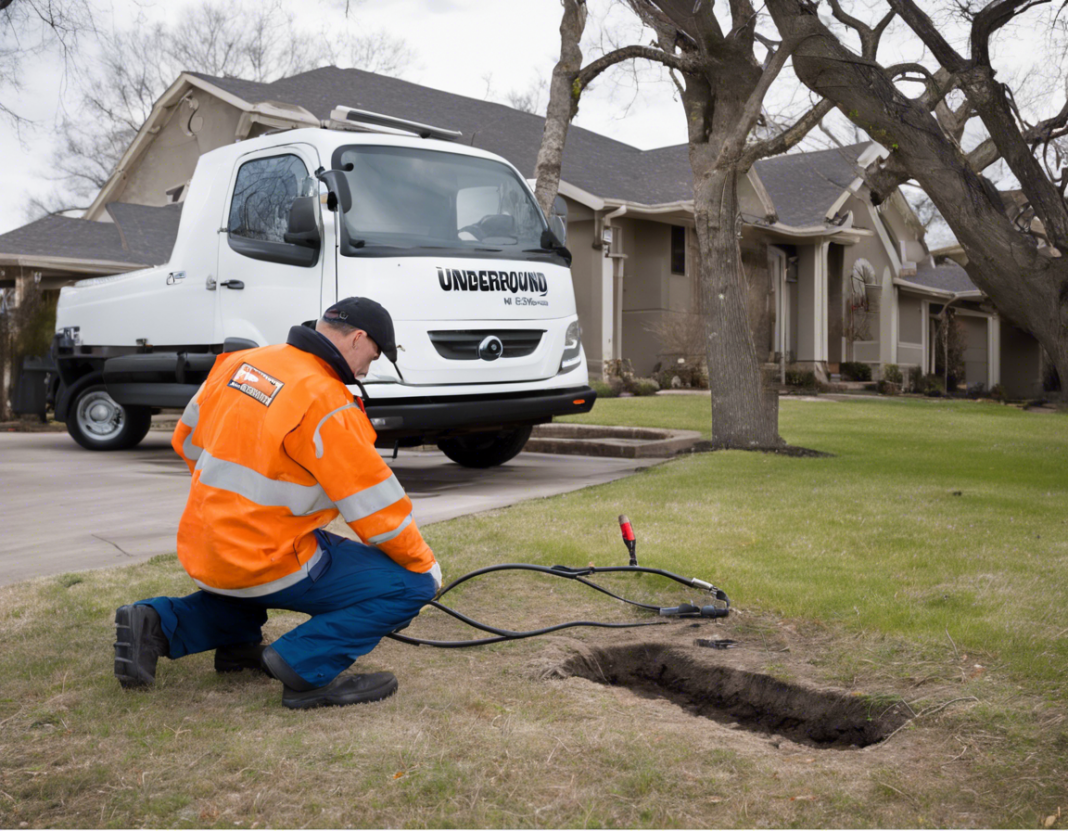Underground leaks can cause significant damage to properties, waste valuable resources, and pose environmental threats if left undetected. Detecting these leaks promptly is crucial to avoid escalating problems and costly repairs. In this comprehensive guide, we will explore the methods used for detecting underground leaks, their importance, and the implications of early detection.
Why Underground Leaks are a Concern
Underground leaks refer to the seepage of water, gas, or other substances from pipes or conduits buried beneath the earth’s surface. These leaks can occur in various underground systems, including water supply lines, sewer lines, gas pipelines, and heating oil tanks. The concerns associated with underground leaks include:
-
Property Damage: Leaks can lead to soil erosion, foundation instability, and structural damage to buildings and infrastructure.
-
Health Risks: Water leaks can promote mold growth, which can exacerbate respiratory issues and allergies in occupants. Gas leaks pose a significant risk of fire or explosion.
-
Resource Waste: Leaks result in the loss of valuable resources such as water, gas, or oil, leading to increased utility bills and environmental strain.
-
Environmental Impact: Underground leaks can contaminate soil and groundwater, affecting ecosystems and potable water sources.
Given these risks, the timely detection of underground leaks is crucial to mitigate their impact and ensure the safety of both property and inhabitants.
Methods for Detecting Underground Leaks
Several methods for detecting underground leaks exist, each suited for different types of leaks and pipeline materials. Some common techniques include:
1. Acoustic Leak Detection:
- Principle: This method relies on listening for the sound of escaping fluids using specialized equipment such as ground microphones or correlators.
- Application: Effective for detecting water leaks in pressurized systems by pinpointing the source of the sound.
2. Gas Leak Detection:
- Principle: Gas leaks are often detected using portable gas detectors capable of sensing specific gases such as methane or propane.
- Application: Ideal for detecting leaks in gas pipelines, heating systems, or industrial facilities.
3. Ground Penetrating Radar (GPR):
- Principle: GPR uses radar pulses to image the subsurface and detect anomalies that may indicate leaks or buried utilities.
- Application: Useful for locating underground pipes, tanks, and voids without excavation.
4. Thermal Imaging:
- Principle: Thermal cameras detect temperature differences on the surface, which can indicate leaks or water intrusion.
- Application: Effective for detecting leaks in underground heating or cooling systems.
5. Tracer Gas Testing:
- Principle: Tracer gases like helium or hydrogen are injected into pipelines, and their presence is monitored to identify leaks.
- Application: Precise method for detecting small leaks in pressurized systems with minimal impact.
By employing a combination of these methods, professionals can accurately identify and locate underground leaks, facilitating timely repairs and minimizing the associated risks.
Importance of Early Leak Detection
The importance of early leak detection cannot be overstated, as it directly influences the extent of damage and cost of repairs. Some key reasons why early detection is crucial include:
-
Damage Prevention: Prompt detection allows for ** timely repairs** before leaks escalate and cause substantial damage to property and infrastructure.
-
Cost Savings: Early intervention can prevent the need for extensive excavation or replacement of underground systems, reducing repair costs significantly.
-
Safety Assurance: Timely detection of gas leaks ensures the safety of occupants and prevents potential fire or explosion hazards.
-
Sustainability: Addressing leaks promptly helps conserve resources and prevents environmental contamination, aligning with sustainable practices.
In summary, early detection of underground leaks is a proactive approach that safeguards property, resources, and the environment while minimizing costs and risks associated with prolonged leaks.
Frequently Asked Questions (FAQs) about Underground Leak Detection
- What are the signs of an underground water leak?
-
Common signs include a sudden increase in water bills, damp spots on walls or floors, unexplained water pooling in the yard, or reduced water pressure.
-
How can I detect a gas leak in my home?
-
Look for a rotten egg smell (added odorant in natural gas), hissing sounds near gas lines, dead vegetation near gas pipes, or physical symptoms like dizziness or nausea.
-
Are underground leak detection services expensive?
-
The cost of leak detection services varies depending on the method used, the complexity of the leak, and the location. However, early detection can save money in the long run by preventing extensive damage.
-
Is it possible to detect leaks in plastic pipes underground?
-
Yes, methods such as acoustic leak detection, thermal imaging, and GPR can be used to detect leaks in plastic pipelines buried underground.
-
How can I prevent underground leaks in the future?
-
Conduct regular inspections on underground systems, maintain pipelines properly, monitor water pressure, and invest in leak detection systems for early warning.
-
Can underground leaks impact the foundation of a building?
-
Yes, prolonged underground leaks can weaken the soil beneath the foundation, leading to settlement issues, cracks, or structural damage.
-
What should I do if I suspect an underground leak?
-
If you suspect a leak, immediately contact a professional leak detection service to assess the situation and recommend the appropriate course of action.
-
How accurate are underground leak detection methods?
-
The accuracy of leak detection methods varies but modern technologies such as acoustic sensors, thermal imaging, and tracer gas testing offer high precision in pinpointing underground leaks.
-
Are there DIY methods for detecting underground leaks?
-
While some signs of leaks can be observed by homeowners, professional leak detection equipment and expertise are typically required for accurate and reliable detection of underground leaks.
-
What are the legal implications of undetected underground leaks?
- Undetected underground leaks can lead to property damage, environmental pollution, health hazards, and potential liabilities for property owners. It is essential to address leaks promptly to mitigate legal risks.
In conclusion, timely detection of underground leaks through various methods is crucial for preventing damage, ensuring safety, and promoting sustainability. Property owners, facility managers, and municipalities should prioritize leak detection as part of their maintenance and risk management strategies to avoid costly repercussions in the future.

